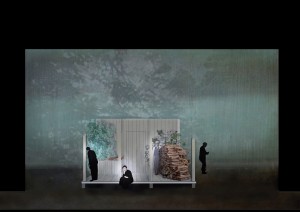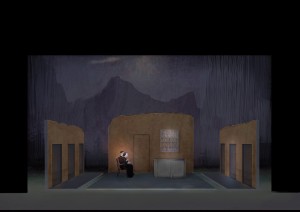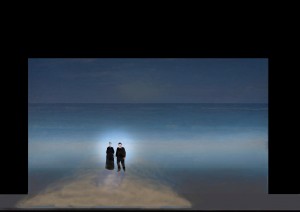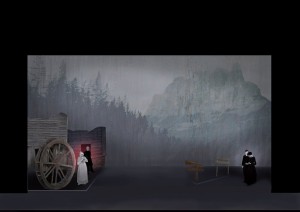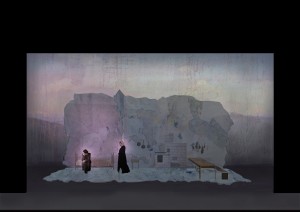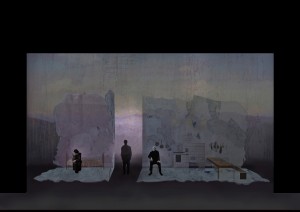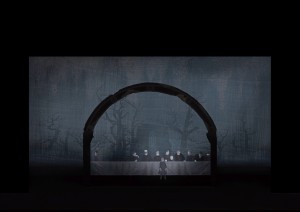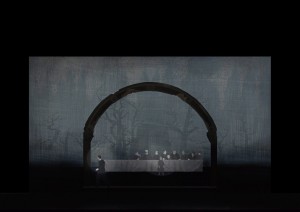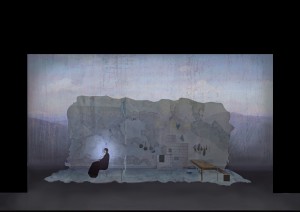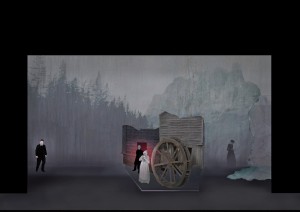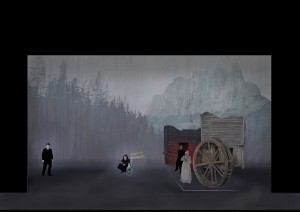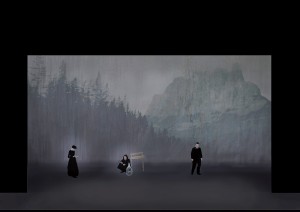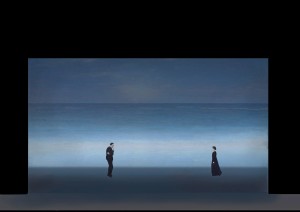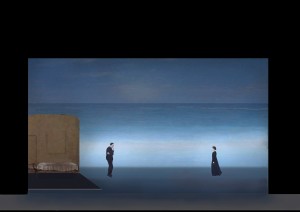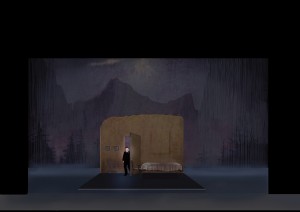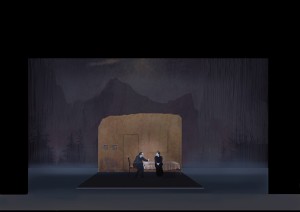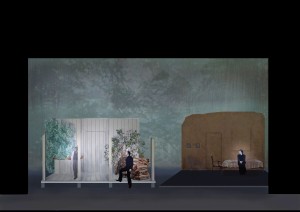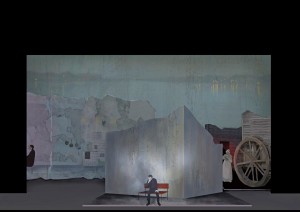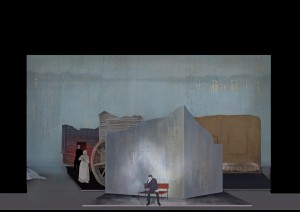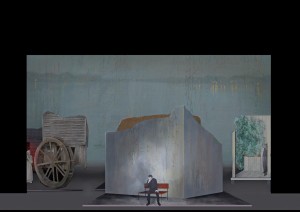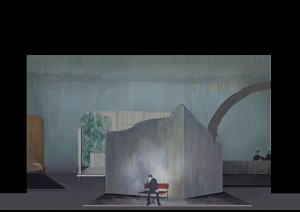Stage design for August Strindberg’s play To Damascus. Part 1
Project of a production based on August Strindberg’s play To Damascus concerns a spiritual journey, so one subjective to each of us. My protagonist sinks into the mass of signs of some spaces and people representing them. These signs are projections of The Stranger’s inner states. In turn characters take functions: from travelling companion to alter ego, or represent someone else’s energy.
The whole mechanism is based on computer-controlled platforms, on which subsequent spaces are built. In the second part of the performance spaces from the first part are repeated, to create a sort of panorama in the final scene.
The journey, however, never ends.

Joanna Załęska created stage design, or actually a visual staging, for a text considered to be one of the most difficult to implement in theatre in the history of literature. Strindberg’s To Damascus is at the same time a realist drama, a symbolic and metaphoric tale, and a vision of reality from the border of a dream. Joanna designed a kind of “fluid” space, a theatrical equivalent of passing film frames. As if images from the life of the protagonist (The Stranger – an everyman character) seen with his eyes, fragments of reality, the only ones that remain in memory. Fragments of stage artwork moving in the space correspond to individual scenes of the staging, they are a kind of “afterimages” of experiences, but also of the internal memory of time lived, in each of us: misty landscapes, faded, dull colours, suspended time between day and night, between real experience of wakefulness and memory. Storyboard for the production refers to the theme of journey through space and time. Joanna has created theatrical, visual equivalent of mental “stream of consciousness”, building a space of mental relationships between the characters. Individual images refer to painting of James McNeill Whistler, Edvard Munch or Caspar David Friedrich, and in particular Vilhelm Hammershøi, embedded in the nineteenth century but interpreted today; paintings with sophisticated colours, interpreting the so-called “light of the north”. Notable are meaningful, carefully selected textures, props reduced to minimum, the pars pro toto principle guiding construction of individual fragments of the stage world, all conducive to emphasising the symbolic nature of the story.
Time of the staging has not been specified, which intensifies atemporality of the piece. Joanna wrote in her explication: “My production concerns spiritual, subjective world of each of us. It is a clash with one’s self, with many faces of ourselves, but also with The Other.”
In the technical aspect Joanna’s project has used the latest staging techniques, e.g. each space was built on mobile, remotely computer-operated Visual Act platforms, or projections, creating their own dramaturgy of the world of nature, including a trail of destruction, passage of time – accumulated, aged images of melancholy. The whole is complemented with costumes – existential marks of character – which also refer to paintings by the abovementioned artists.
A beautiful project.
Dr. hab. Paweł Dobrzycki, Associate Professor
B. 1990; studies: stage design at the University of Arts in Poznań (2011–2012); Faculty of Stage Design of the Academy of Fine Arts in Warsaw (first-cycle 2012–2014, second-cycle since 2014); art history at the Faculty of History and Social Sciences of the Cardinal Stefan Wyszyński University in Warsaw (since 2010). Scholarship from the City of Warsaw (2013–2014). She develops stage and set design, costumes for theatre and films, and experimental textiles.



